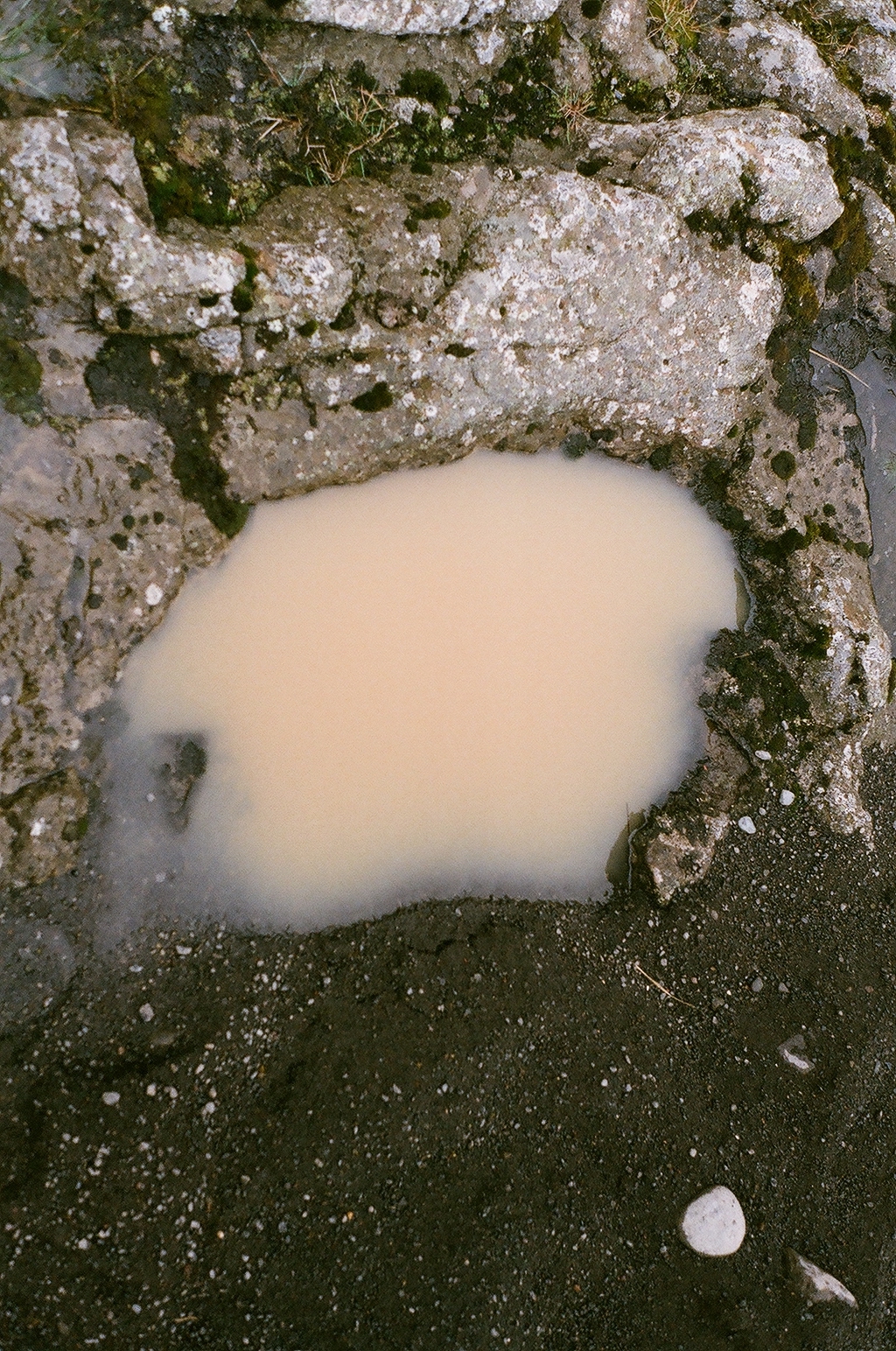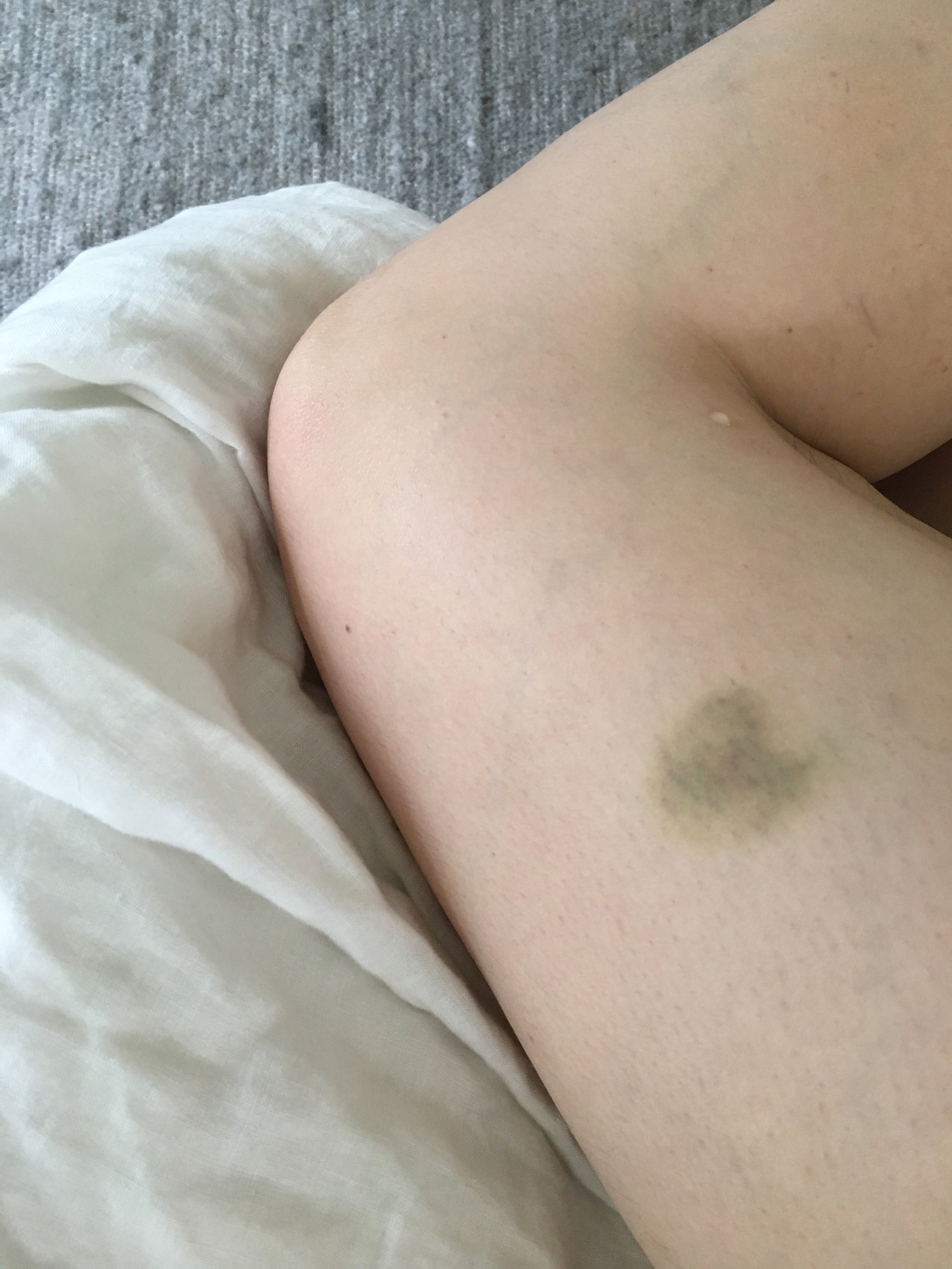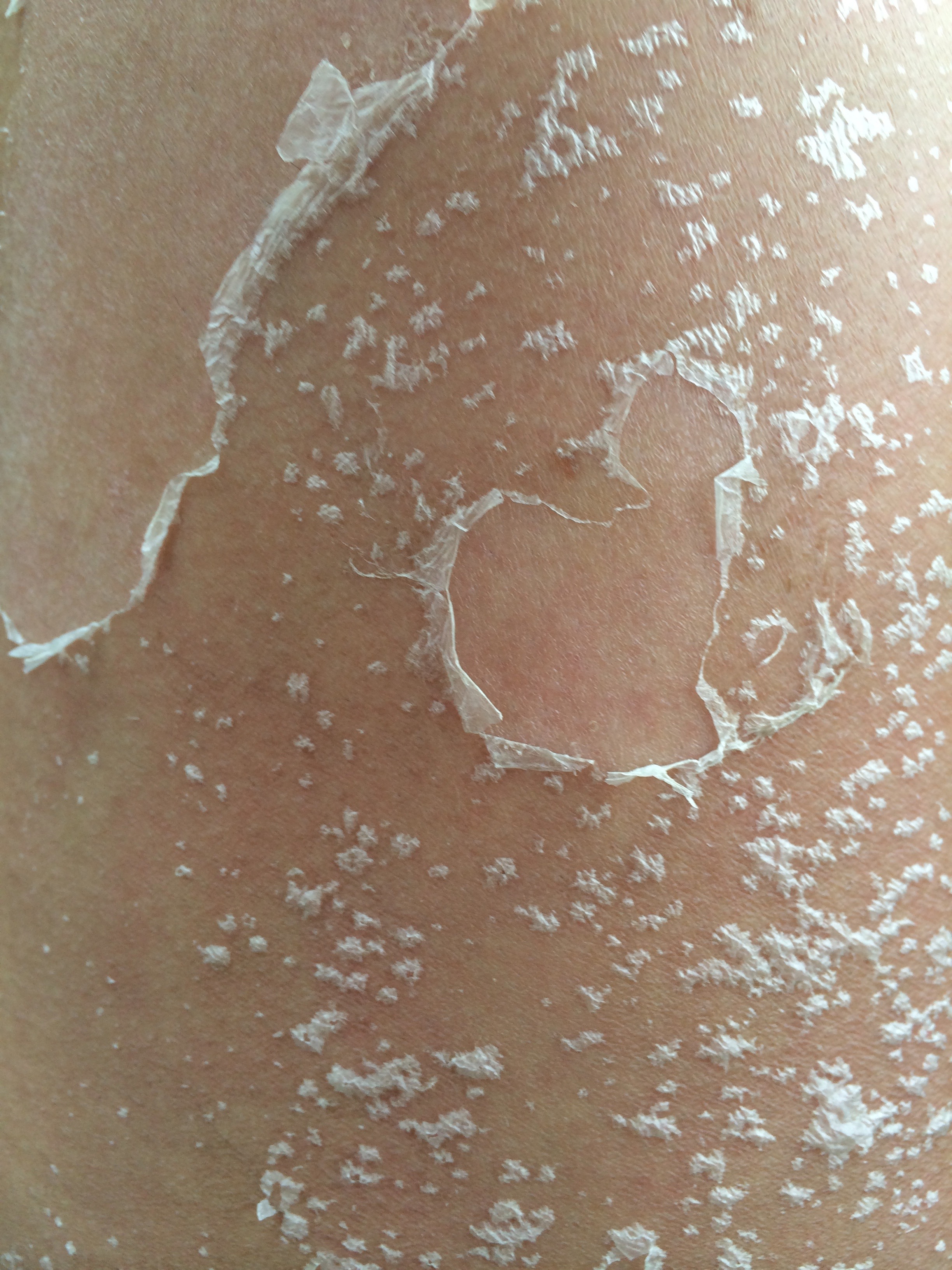There is a certain irony in the fact that as I sit down to finally write this piece, which I have been skillfully putting off for weeks now, I am suddenly gripped with the very feeling I am meant to be intellectually approaching: anxiety. Every time that I have contemplated starting this assignment I have come up with something else that has felt more urgent. Among countless other domestic tasks, I have: made mushroom risotto, organized all the items in my bathroom, mended four pairs of pants, repotted a large houseplant, dusted every surface in my apartment, made fresh lemon curd, showered and moisturized daily, made granola, swept under all my furniture, sewed a face mask and a bathroom hand towel. The whole time I have assured myself that it hasn’t been procrastination, it’s been research. After all, my work and this text with which I am placing it in conversation, are about such seemingly-mundane processes and their unsung impact on the self.
Perhaps this text, “Utopia of Ordinary Habit: Crafting, Creativity and Spiritual Practice”, which is the final chapter in Ann Cvetkovich’s book Depression: A Public Feeling, has never been more relevant, not only to me and my artistic practice but also to countless people the world over who are currently homebound due to the social distancing measures put in place to curb the spread of COVID-19, an unprecedented global pandemic. Anxiety, depression, loneliness, aimlessness and uncertainty currently run rampant in households across the globe as this virus takes its toll, both directly and indirectly, on innumerable lives. Perhaps there is no better evidence for Cvetkovich’s overall thesis: that depression and anxiety can be thought of as “cultural and social phenomenon” not exclusively as a “medical disease” (Cvetkovich 1). Undoubtedly, many are currently experiencing myriad emotional states that align with no medical diagnosis.
As we are all being told to “stay home, save lives,” the domestic sphere is getting an unordinary amount of attention. For many, the home has transitioned from being one of countless locations that life is divided up between to being the exclusive setting for all parts of existence. As we turn to technological forms of connecting, be that through social media, video chats or virtual meetings, the line between the public and private continues to blur. Cvetkovich emphasizes the significance of the relationship between depression and the domestic, referring to her colleague Katie Stewart’s work that “describes domestic comfort as a deceptive structure of feeling, the buffer that keeps bad feelings at bay, but, as the pervasiveness of depression suggests, an atmosphere that is also haunted by bad feelings, by the awareness that something is wrong, either inside or outside” (156). Hyper-aware as we are of the fact something outside is very “wrong” it seems unreasonable that all negative feelings will be kept from permeating the walls of home, mixing in with whatever small personal crises that may already be dwelling there.
On March 5, 2020, approximately nine days before my personal microcosm began feeling the reverberations that elsewhere were already causing lives to crumble, my partner and I ended our relationship. It was long-distance so initially this change had very little to do with the day-to-day. We had also come to the decision rationally and mutually so I immediately fixated on all the positive ramifications of this change. I continuously reiterated an internal “really all for the best” narrative. After all, I could see how the fervor with which I had previously clung to the idea of our relationship could be framed as “cruel optimism” or a form of “bad attachment” (166). Still, the heartbreak of it— the part where I looked back at every photo of the two of us, watched videos of him eating, hiking, working at his computer, sitting beside a campfire, sipping a drink at sunset, laughing and telling me that he loves me— came. This wave of feeling started after the isolation, usually at night, when all my routines started to change and I came face-to-face with the emotional reality of letting him go and living inside this moment, both global and personal, alone.
“It can be hard to tell the difference between inside and outside—between what’s inside your body and what’s out there, between what’s inside the house and what’s outside in the neighborhood or on the other side of town, between your heartbreak and the misery in the world beyond,” Cvetkovich writes, once again emphasizing the relationship between interiority and exteriority (158). I am writing this candidly, perhaps because Cvetkovich has given me permission to, through the way she herself writes and through the way she speaks of "the turn to memoir and the personal in criticism as a sign of either the exhaustion of theory or its renewed life” (3). I also share these personal narratives because the stuff of life, and especially the emotions that are the byproducts of lived experiences, are ultimately the catalyst for and conceptual backbone of my work.
My practice has always been about feeling, as the word pertains to both the haptic and the affective (5). It is materially rooted and the meaning of the work is embedded in the processes used: material as metaphor and process as practice. I only truly understand what a piece is doing or saying when I am inside the process of making it, participating in the “forms of practice that perform thinking by doing” (168). I start with an impulse, motivated by a feeling or a general need to get something out: externalize the internal. I think of materials as a language of their own and by employing them in abstract ways, I try to translate the intimate into something universal and visceral, experienced more through feeling than thinking.
Taking a retrospective look at the work I have made over the last five years, repeatedly I see myself responding to and processing emotionally-charged experiences: break-ups, car accidents, unrequited love, moving, the death of loved ones. The works never illustrate such events and often the final product is abstracted to such a degree that the specificity of what fueled the work can become unclear to the viewer. Intentionally-leading titles can help provide a snippet of context. Pieces from the past such as Tireless Efforts of an Eternal Optimist, Second Best Alternative to Loneliness, and Weight in Your Gut (Impact Anxiety) all use these short bits of language to allude to the experiences that brought them into being. Yet for all of them the significance is in the act of making. In the first two pieces mentioned, I used the time-consuming process of hand embroidery as a method of repurposing energy and attention. I attempted to control feelings of romantic longing by channeling them into an object. In both cases the process allowed for a meditative reflection on the feelings that necessitated their making and brought about a sense of closure.
Weight in Your Gut (Impact Anxiety) similarly used a repetitive process, in which the “process and rhythm of the work is what matters” (182) as a coping mechanism but also used the materiality and history of the object for the purpose of meaning-making. Made in the aftermath of a severe car accident and a close friend's death in a separate accident, as a way of externalizing the weight I felt in my stomach, the residual fear of impact, the work is materially quite simple. It is a misshapen hunk of clay, slightly smaller than the 25 pound block that it was purchased as, that was left in my car for an extended period of time and present during the accident. I did not alter the form, meaning the impact itself played a part in sculpting it. The clay has been covered in many layers of graphite pigment. The pigment was applied by both scribbling vigorously onto the clay and by mixing graphite powder with water and painting it onto the form. When displayed, it sits on a large piece of white mat-board upon which the piece has been rolled, leaving graphite markings on its surface which are reminiscent of the marks left on cement barriers after collisions. Just as Cvetkovich links the process of knitting in Anne Auerbach’s work to an “act of mourning,” this work functioned as an outlet for grief and fear (174).
The idea that craft “fosters ways of being in the world in which the body moves the mind rather than the other way around, or in which, echoing neurobiological views in another register, body and mind are deeply enmeshed or holistically connected” reinforces my own previously held belief in the significance of making (168). Cvetkovich’s framing of the positive feelings that are generated by acts of creation as an antidote to depression and anxiety, however, expanded my understanding of craft’s potential psychological implications. While I do not think it’s safe to claim universality to the relief found through certain processes, as I know for a fact that what is meditative and utopic for some is tedious and frustrating to others, I have experienced personally the affective results of using making as an “ordinary form of spiritual practice” (159).
The works I have produced during this period, the last three and a half weeks of isolation, are byproducts of constructing for myself a Utopia of Everyday Habit. I have titled the in-process overall body of work Soft Touches, a phrase with specific personal connotations as well as a connection to our current social moment, a moment when the sensory experience of touch has been put in the spotlight. The tactility of the forms and the physicality of the processes involved in their making were used as stand-ins for physical engagement with other people. Needle felting, like other traditional textile techniques, requires repetitive motion, the handling of the supple fibers of the wool as they are connecting to one another and little else. It is an activity easily done in bed, in the evening: a form of what I like to think of as “productive relaxation.” In the same way I turned to embroidery in the past as an outlet for the feelings that can creep in on lonely evenings after the active distractions of the day have disappeared, here I turned to needle felting. The work itself turned into a fuzzy, organic membrane where subtractive and additive processes cohabitate. The felted forms creeping through the positive space mimic the negative spaces that were cut into the fleshy-pink wool fabric. When I look at it I see connective tissue, I see the space between bodies in the fetal position, I see absence pushing up against presence, but most of all I see an externalization of something previously held in my own body.
While formally they are clearly in relationship, the process of making the second work was quite contrary to the gentle, clean process of needle felting. Made entirely on the floor of my kitchen, this rigid structure is almost a foil to the fluid hangings. Into a deconstructed cardboard box that had played a part in both of my recent moves— first from Portland to Vancouver, then from the tiny, dark room on 7th to my current light-filled sanctuary— I cut large amorphous holes. I then used papier-mâché to coat one side of the cardboard and subsequently painted the surface white, using the same house paint and rollers I had just recently used to paint my entire apartment. After this priming step I painted the entire side a fleshy pink, using watered down acrylic, and covered select holes with a pink hexagonal mesh fabric. Standing the reinforced cardboard up, I attached both ends to create an overall footprint to the sculpture that would mimic the openings in it. To the exterior of the form I applied plaster cloth, made using the cotton from an old duvet cover and a used pillowcase. The result is a shell, open and penetrable, but with a distinct sense of interiority and exteriority. It makes reference to architecture, to the casts used to set broken bones, to the resourceful activities of children with too much time on their hands. Its scale makes reference to furniture, something belonging in the home, yet its utility is hard to extrapolate.
In both cases the choice and handling of materials is once again significant to the content of the work. The structural piece is much more transformed, materiality speaking, while the needle felted work seems to be more transparent about its make up. Yet both of them employ processes that are in some way associated with the “practice of feminist crafting that combines art, politics, and everyday life to rework debates about domesticity.” (159) Even subtle decisions, such to use cotton from bedding rather than pre-made plaster-cloth, bring these pieces further into dialogue with the stuff of home life and of a feminine instinct to “make something from nothing,” to use a phrase borrowed from the title of reference to Lucy Lippard’s 1978 essay on a “Definition of Women’s “Hobby Art” (Lippard, 97).
Cvetkovich defines domestic spaces as the “humble material locations” where “depression can be transformed through practices that can become the microclimate of hope” (155). While working from home, I have felt the lines between my domestic practice and my studio practice blur. Materials are stored in cabinets beside the pots and pans. The mixing of plaster, the mixing of batter, the mending of a pair of linen pants, the stitching of a soft sculpture: each process is as valid and meaningful as the next, each with its own sensory responses. They all serve as part of this “art of daily living” that Cvetkovich cites in this text as one possible “cure” for negative feelings (161). My sculptural works have taken up residence with me, keeping my body and mind active, providing me company in a season of solitude. Inevitably, feelings of anxiety, sadness and fear, caused by what is happening in the world beyond, seep in. Yet in the microcosm of these three rooms, a Utopia of Everyday Habit of my own construction, I find solace in the processes that make something out of them, giving form to what is felt.
Works Cited
Cvetkovich, Ann. Depression: a Public Feeling. Duke University Press, 2012.
Lippard, Lucy R. Get the Message?: a Decade of Art for Social Change. E.P. Dutton, 1984.










